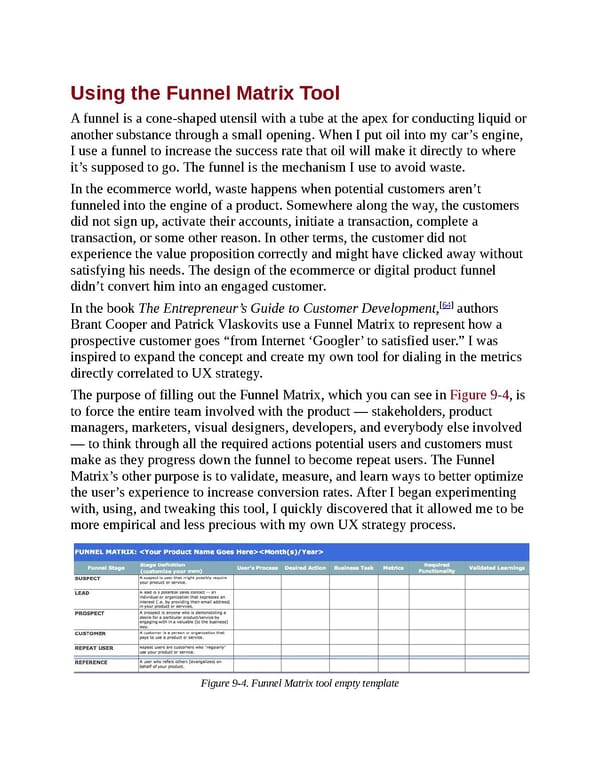Using the Funnel Matrix Tool A funnel is a cone-shaped utensil with a tube at the apex for conducting liquid or another substance through a small opening. When I put oil into my car’s engine, I use a funnel to increase the success rate that oil will make it directly to where it’s supposed to go. The funnel is the mechanism I use to avoid waste. In the ecommerce world, waste happens when potential customers aren’t funneled into the engine of a product. Somewhere along the way, the customers did not sign up, activate their accounts, initiate a transaction, complete a transaction, or some other reason. In other terms, the customer did not experience the value proposition correctly and might have clicked away without satisfying his needs. The design of the ecommerce or digital product funnel didn’t convert him into an engaged customer. [64] In the book The Entrepreneur’s Guide to Customer Development, authors Brant Cooper and Patrick Vlaskovits use a Funnel Matrix to represent how a prospective customer goes “from Internet ‘Googler’ to satisfied user.” I was inspired to expand the concept and create my own tool for dialing in the metrics directly correlated to UX strategy. The purpose of filling out the Funnel Matrix, which you can see in Figure 9-4, is to force the entire team involved with the product — stakeholders, product managers, marketers, visual designers, developers, and everybody else involved — to think through all the required actions potential users and customers must make as they progress down the funnel to become repeat users. The Funnel Matrix’s other purpose is to validate, measure, and learn ways to better optimize the user’s experience to increase conversion rates. After I began experimenting with, using, and tweaking this tool, I quickly discovered that it allowed me to be more empirical and less precious with my own UX strategy process. Figure 9-4. Funnel Matrix tool empty template
 UX Strategy: How to Devise Innovative Digital Products that People Want Page 247 Page 249
UX Strategy: How to Devise Innovative Digital Products that People Want Page 247 Page 249